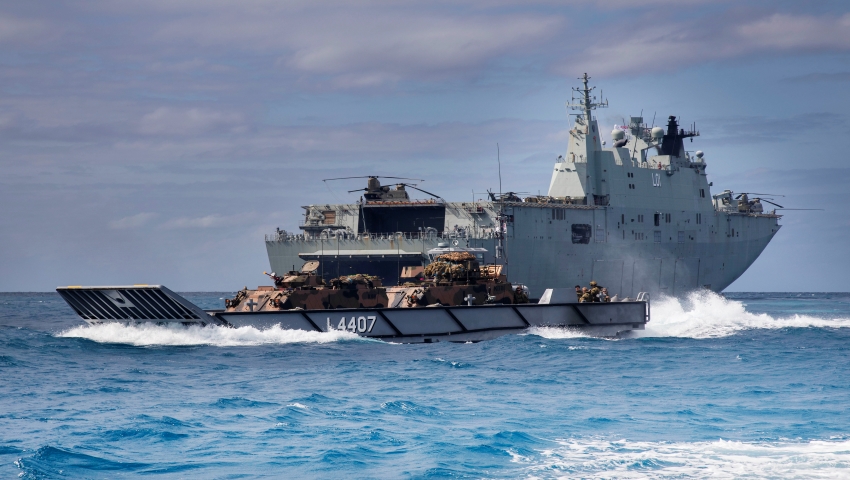Sponsored by Navantia Australia.
To continue reading the rest of this article, please log in.
Create free account to get unlimited news articles and more!
The systems engineering life-cycle is well understood and consistently applied to acquisition phases of naval asset procurement. The logical steps from project feasibility, the establishment of the CONOPS and requirements baseline, design phases, verification and validation and transfer to operation are consistently followed under the acquisition ASDEFCON framework. But what of the design process in the asset sustainment phase?
Notionally the engineering process for the update and upgrade of naval assets should follow the same framework as that for acquisition programs, however the realities of the sustainment environment inevitably places pressure on the ability to adhere to the traditional process steps and engineering governance regimes.
1. Design changes must be aligned to the design intent and design context of the vessel
One of the key challenges facing update and upgrade projects in a sustainment environment is in creating product designs that carefully consider the original asset design intent and constraints. Special care must be engaged to understand the full impact of a design change in the context of the overall vessel design, such that the change does not inadvertently impact on safety, seaworthiness, operational profile and maintainability.
Appropriate management of the vessel requirements baseline is the most effective platform from which to coordinate design change and manage compliance to the underlying design intent of the vessel. Deviation from the original requirements baseline needs to be properly understood and assessed for consequential risks. For this, an intimate knowledge of the full requirements definition and the ship heritage is of enormous benefit.
2. A fully integrated design approach
Another challenge facing design change in the sustainment environment is the need to manage update and upgrade projects within a fully integrated design approach. The full context of any design change must be considered to assess the holistic impacts on system integration, interoperability, safety and maintainability. Even a relatively simple change or deviation has the potential to introduce safety hazards, performance impacts and unexpected consequences to ship performance and maintainability.
A fully integrated design approach that for any given, design change the acquisition approach of a single ship designer integrating equipment and sub systems is equally relevant in the sustainment phase that incorporates all aspects of the change, utilises design standards, maintains arrangement and margin control, which ultimately leads to continuous seaworthiness integrity.
3. Management of a product baseline
The product baseline of an asset defines the current state of the vessel design and the material configuration. Update and upgrade design projects must consider the documented product baseline to ensure that new designs are undertaken with a detailed knowledge of the existing material state and physical elements that could impact the design integrity.
It is a reality in the sustainment environment, as a result of budget allocations and vessel availability, that the time between design and implementation can sometimes be extensive. The integrity of any proposed design change must consider the material state of the vessel at the time of implementation, as it may be different to the material state under which the original design was based.
Integration of the design team in to the asset sustainment enterprise is essential to ensure that engineering changes are coordinated and implemented in to a clearly understood product baseline.
4. Engineering design certification
Verification of engineering change projects for update and upkeep must be undertaken by a suitably qualified and experienced engineer, warranting that across multiple engineering disciplines robust engineering process has been followed and that engineers with the right qualifications and competency have performed their relevant tasks. Ensuring safety and adherence to the defined requirements for any particular design project is of paramount responsibility.
Design certification is not a subject to be taken lightly. Design certification provides the project sponsor and end user with confidence and assurance that a design change can be implemented within a clearly bound statement of analysed impacts for safety, operability and maintainability.
Navantia Australia is uniquely placed to provide engineering design services to the Royal Australia Navy. As the ship designer of the Hobart Class DDG’s, Canberra Class LHD’s, Supply Class AOR’s and the LHD Landing Craft, Navantia Australia successfully combines the design heritage knowledge of the vessels with Australian engineering expertise.
Navantia Australia maintains the full breadth of engineering capability including naval architecture, structural engineering, electrical and mechanical engineering, combat system integration and Integrated Logistics Support. Utilising the latest of engineering tools and simulation technology, Navantia Australia is established and ready to undertake the complex tasks of engineering design in support of RAN assets.

 Login
Login







